A Week in the Bush Vol. 511
on Jul 31, 2024Our week started with a lovely early morning surprise when we found a herd of buffalo, and suddenly a lion emerged from the tall grass. With one almost silent call, more lions appeared. As we were trying to count them, more lions kept showing up. This was a real treat for us, as we don't often get to see the very large Kambula Pride, which consists of lions of all ages.
These big prides often follow herds of buffalo for long distances, sometimes for days, waiting for the perfect opportunity to attack. It's risky for the lions to follow these herds because they often turn back and defend themselves. However, the reward for the lions is big – a large meal to sustain this large pride of lions.
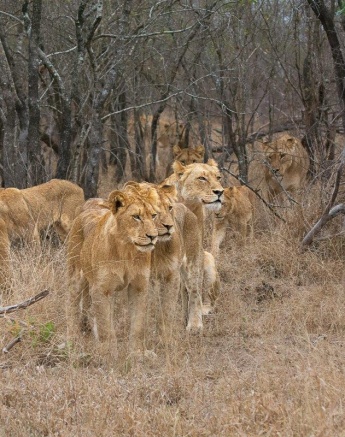
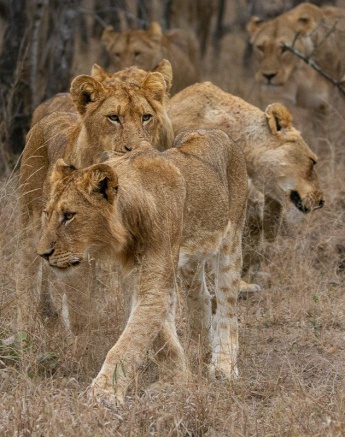
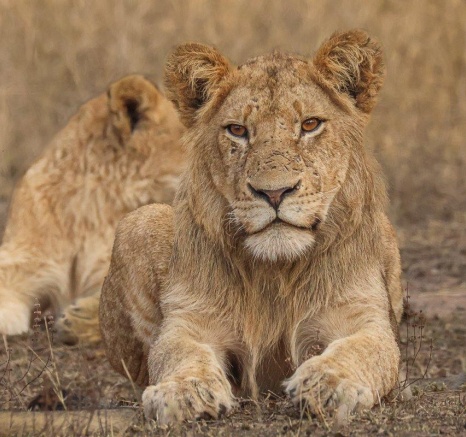
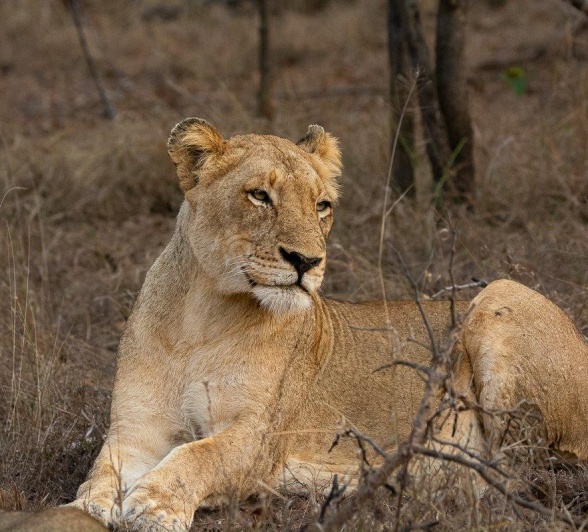
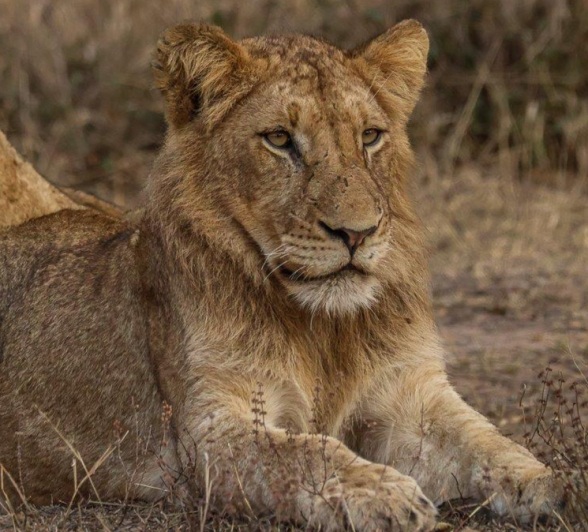
The Msuthlu Pride have been seen for days now very close to the area were one of the females has her newly born cubs. The pride has been hunting around the area to ensure the new mom can produce enough nutritious milk for her cubs. Lion cubs, from birth until about three months, will only rely on milk before being introduced to meat.
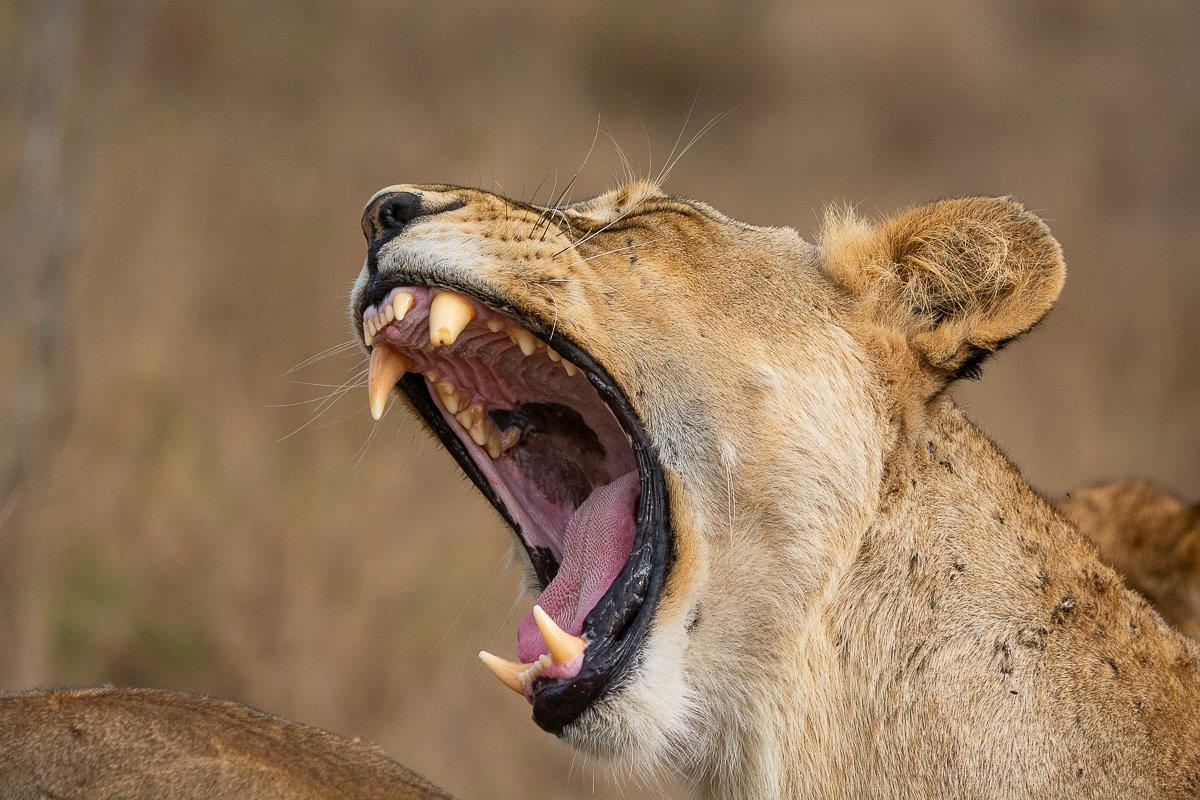
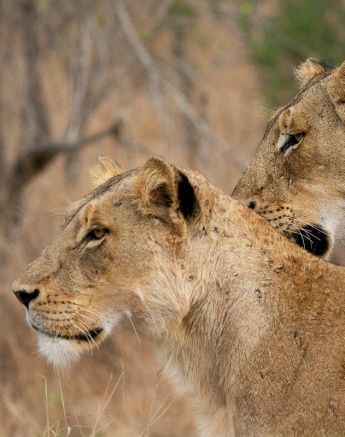
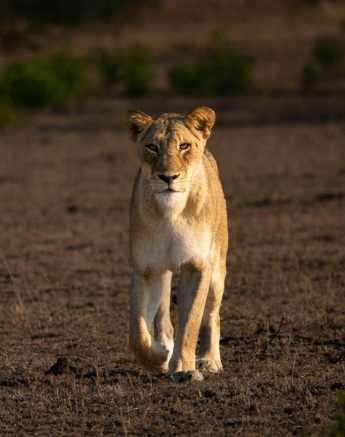
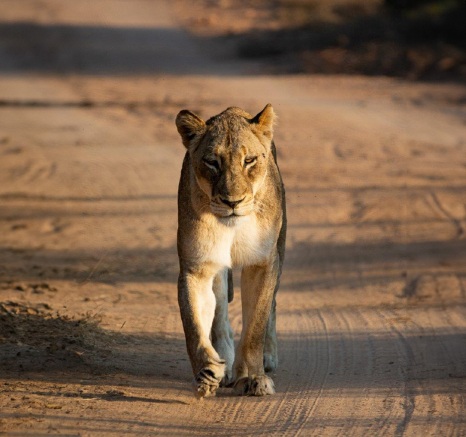
After finding the Msuthlu Pride with the Gijima males far south in our reserve, they started making their way back further north where it is safer for the youngsters. We managed to find the remains of a zebra that they were clearly successful in taking down and finishing off before sunrise. We later found the whole pride at a nearby waterhole where they were sleeping with full bellies, looking very healthy again. It is unclear why these females took their cubs that far south out of their known area but with the presence of the Gijima males there is always a sense of safety.
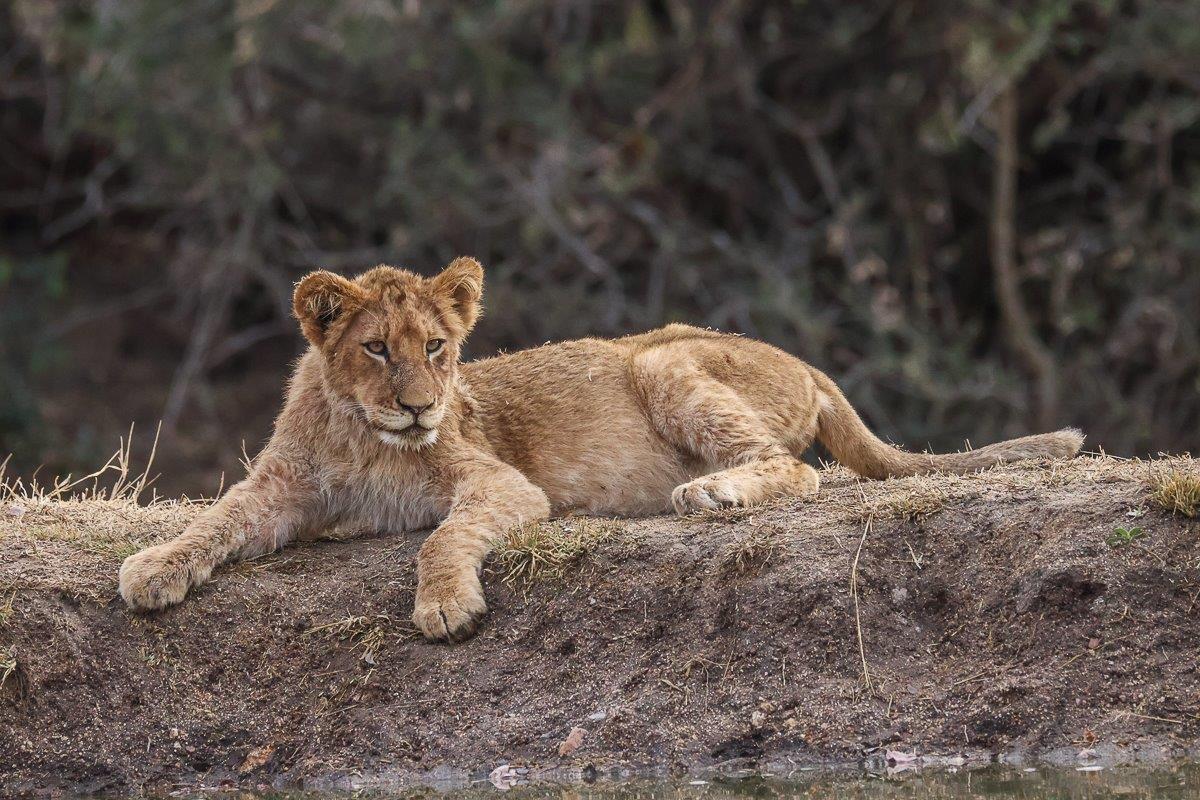
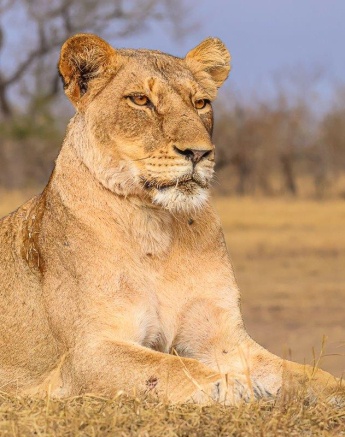
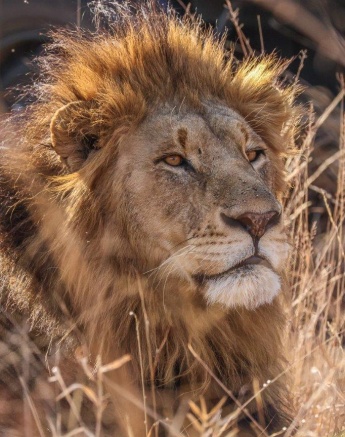
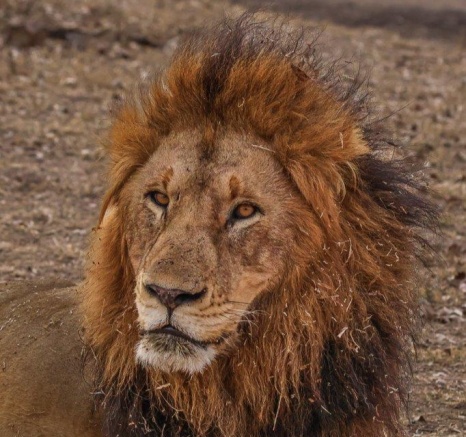
Encountering fresh lion tracks is always an exciting way to start a morning safari. Although we initially lost the tracks, we continued with our safari and on our way back to the lodge at the end of our drive, we discovered more lion tracks leading straight towards a dam. After a short follow-up, we found the Msuthlu Pride resting on the edge of the water, with the younger lions making their way towards the adult lionesses.
This pride has not had any luck securing a meal over the past few days and will be on the lookout for any opportunities. They will spend the day in the open area due to favourable temperatures and will resume their movement as soon as the sun sets. With winter in full swing, finding water can be challenging, leading animals to stay in areas where it is available. This also means that prey animals will be concentrated in these areas, which benefits the predators.
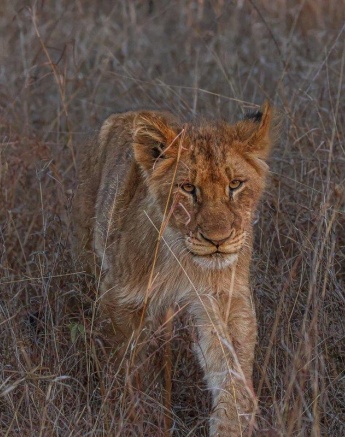
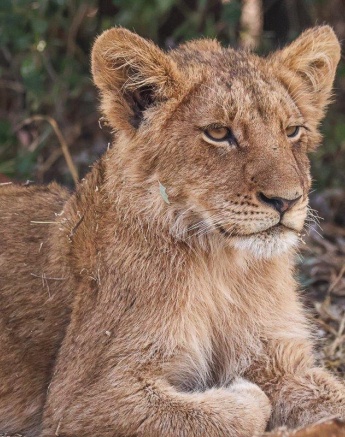
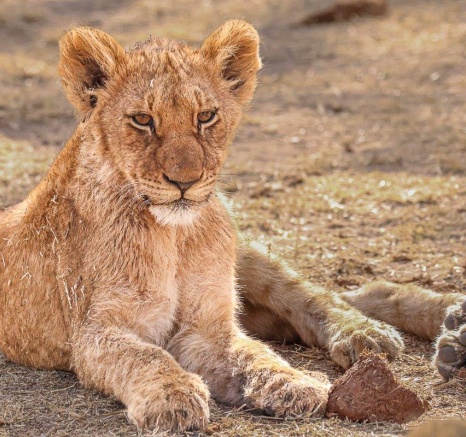
After finding tracks for a pride of lions close to Earth Lodge during a bushwalk, we decided to move into the area during afternoon safari. We followed the tracks and looked in all the areas we thought they might be, but with no luck. We later circled back and tried the last area we could think of, just before we jumped off the vehicle again to walk in on the tracks, the Southern Pride popped their heads up as they were sleeping in a rocky section. We found four of the lionesses resting in the long grass, looking very healthy as they had a meal recently. These lions will head back to where the rest of the pride is in the evening to regroup and keep their youngsters safe. With the Gijima males having cubs with more than one pride currently it makes it difficult for them to keep everyone safe, hence this pride being very careful as to where they spend their days as they know they need to protect themselves against any other rivals that they might bump into.
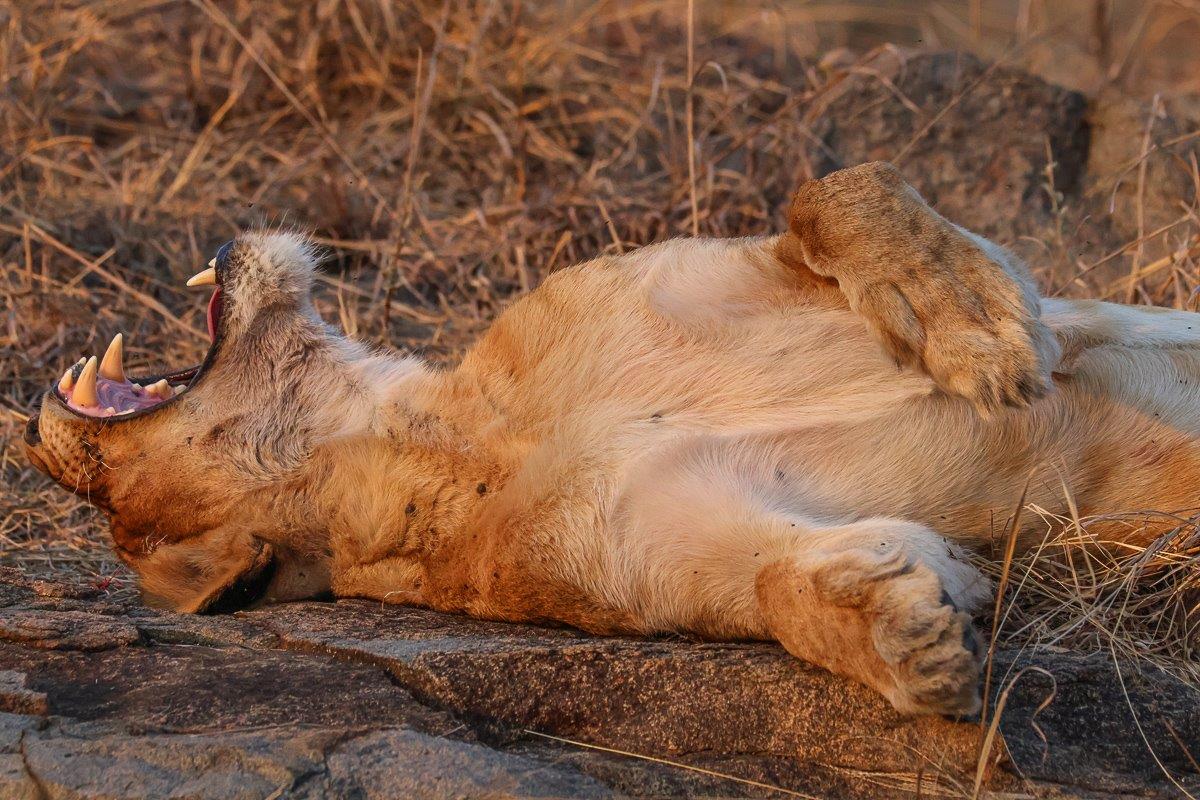
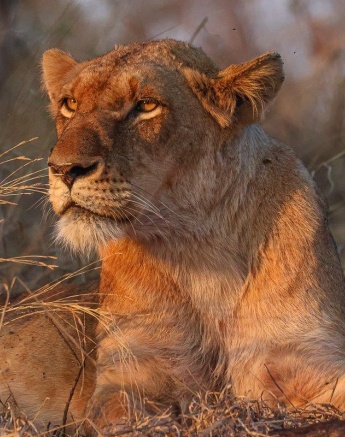
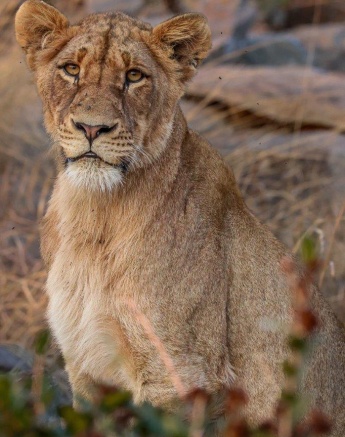
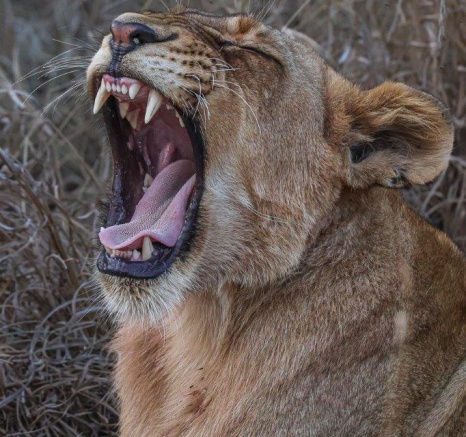
Male leopards often cover great distances at night, especially when they are on a scent marking mission. We tracked N’weti for quite some time before finding him deep in the eastern section of our reserve. He had moved a very long distance during the night, indicating he was ready to rest for the day. While keeping a close eye on a nearby warthog burrow, he had no luck with any warthogs emerging, so he went to find a comfortable spot in the long grass.
N’weti has been dominating over the last couple of months with no real competition from rival males. This male is incredibly large and ensures other males know of his presence, giving him the upper hand due to his very high confidence level.
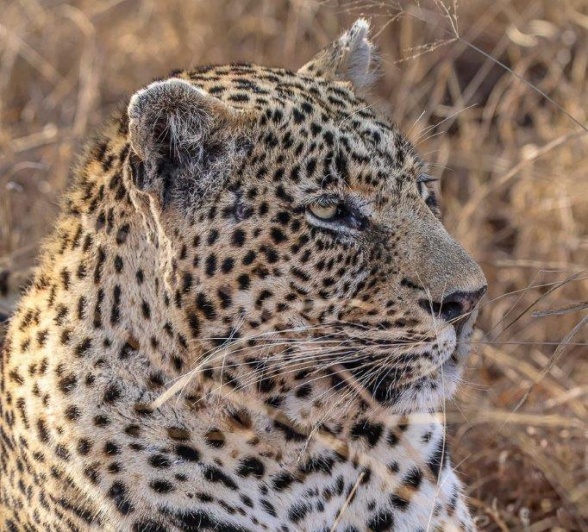
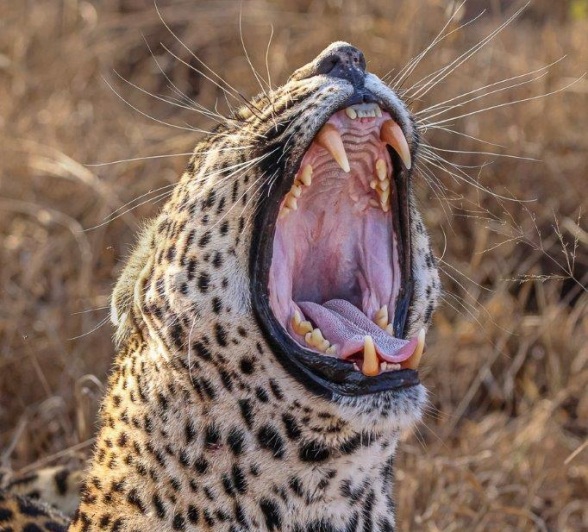
The Ntsumi female was seen on the move and hunting during morning safari. Her cubs were left behind to their own devices in a drainage line not too far away from where she was seen. As the cubs age, they spend less and less time together as they will soon lead a solitary lifestyle once they become independent. It was no different during this sighting, as both cubs were relaxing a fair distance away from each other.
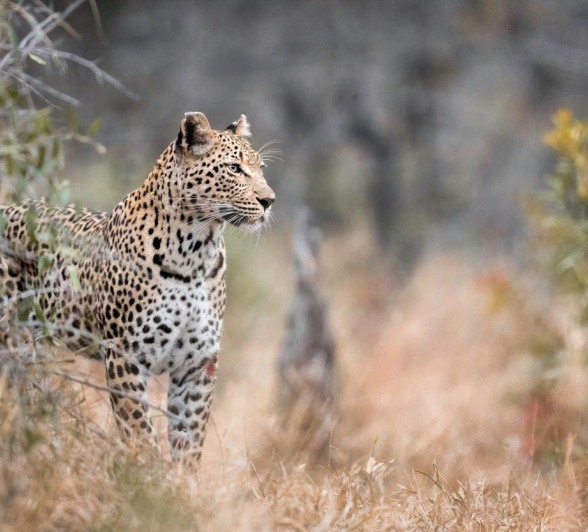

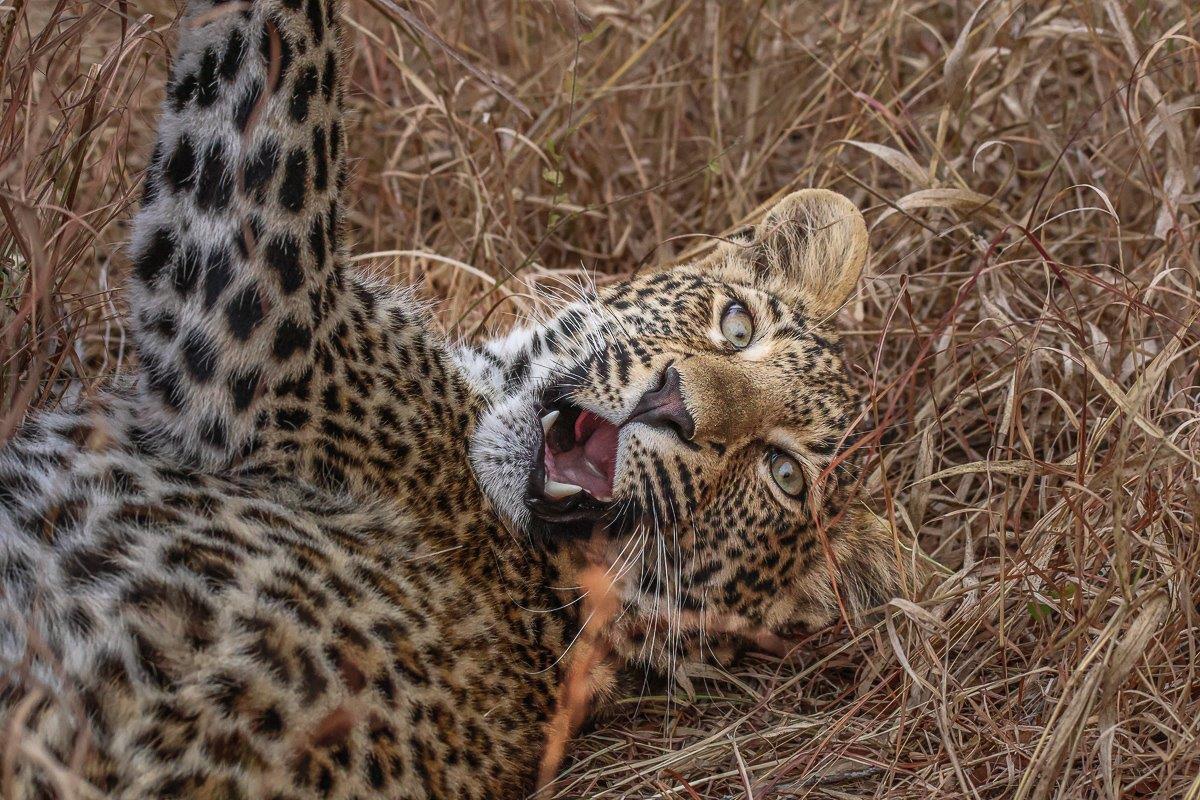
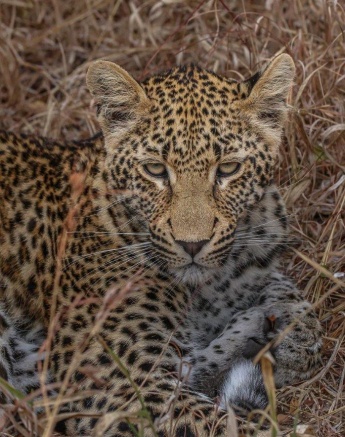
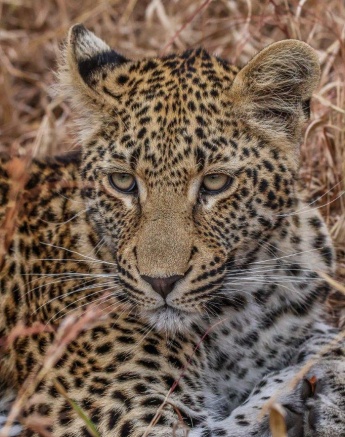
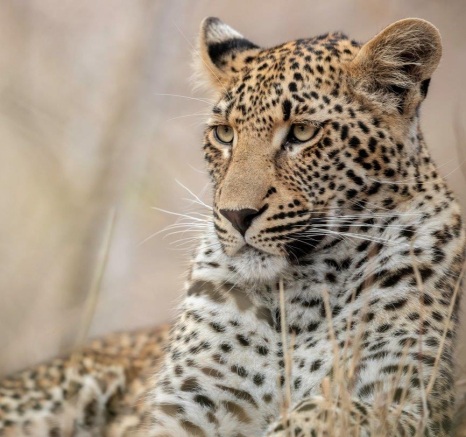
After tracking and with the aid of impalas alarm calling, we managed to locate a cheetah on the move just as the sun was rising. He made his way up a termite mound to scan the area, rewarding our guests with some amazing viewing. He then descended the mound and carried on scent marking as he moved along.
Cheetah are an endangered species and not seen too often so when we do spot them, spending time with them is always a highlight!
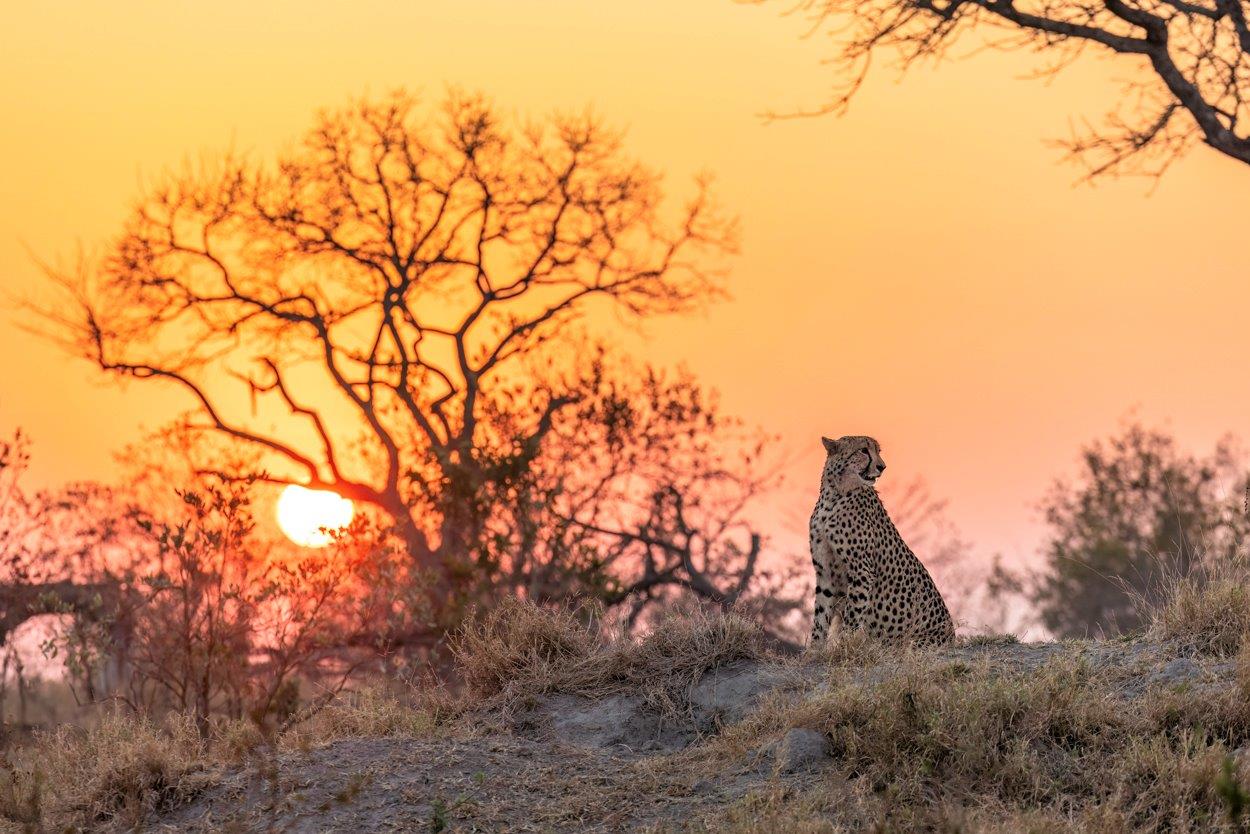
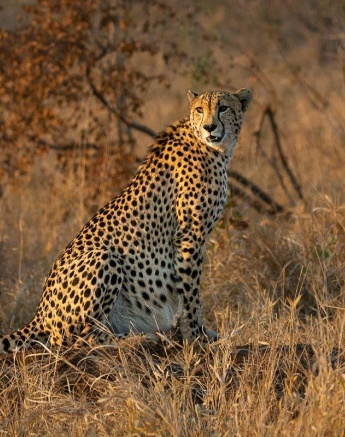
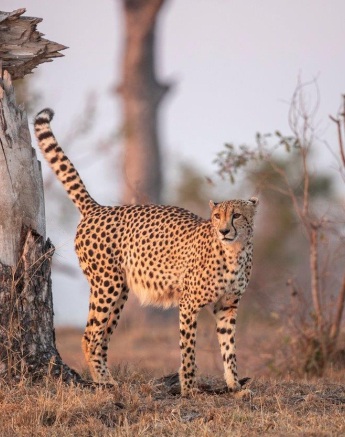
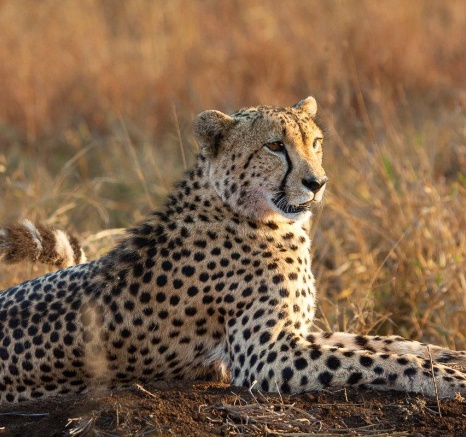
Some of our guests were extremely lucky to have spent some time with a serval that was relaxing out in the open just after the sun had gone down. After about 10 minutes, it got up, looked around and slowly moved off. Sightings of servals are few and far between, and so to have spent so much time with one was truly special.
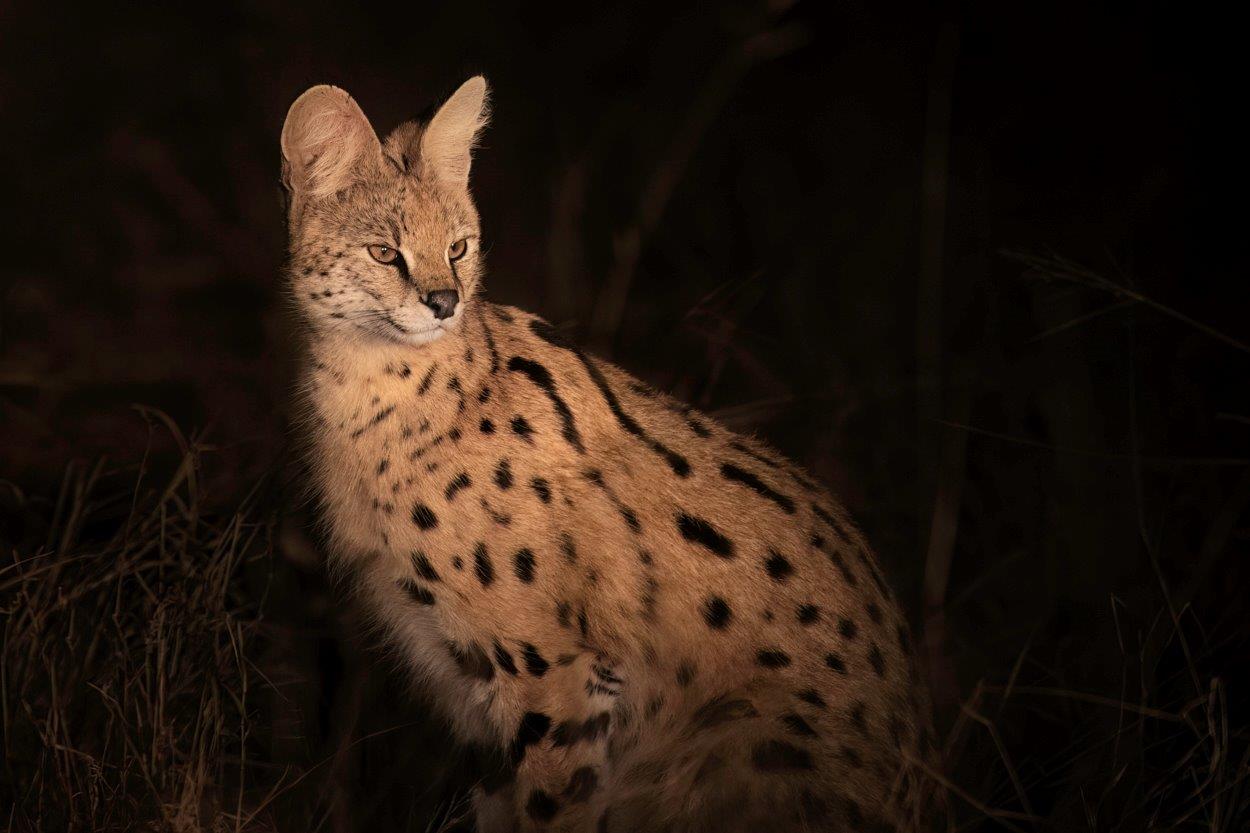
We came across this herd of impala at a waterhole early in the morning as they were busy quenching their thirst. These antelopes tend to drink early in the morning and then again only late afternoon before sunset. Trying to avoid the waterholes during middays as they know this is often the time predators hang around the water sources. With temperatures being cooler these antelopes don't need to drink water during midday, and they will spend their time feeding in areas where they feel safer.
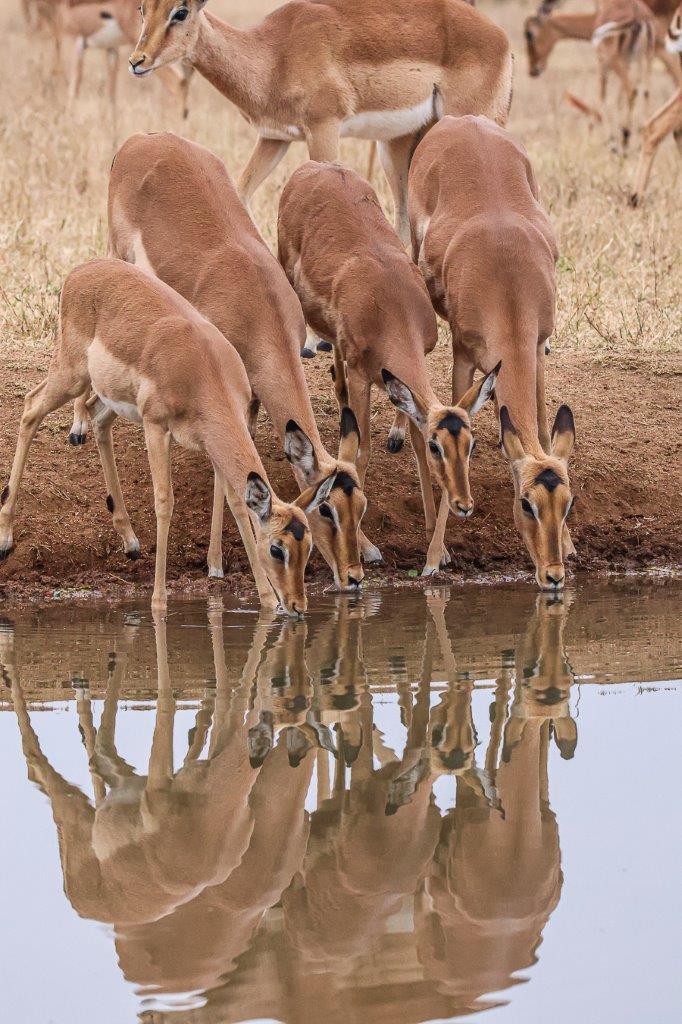
We observed an increase in vulture activity south of Earth Lodge and decided to investigate. When we arrived, we found vultures roosted in the trees before starting to circle the area. We discovered the remains of a large waterbuck bull that appeared to have died from natural causes, providing a feast for the scavengers. There were White-backed vultures and Hooded vultures, as well as multiple hyenas in the vicinity. These scavengers often share carcasses, especially when there is an abundance of food. However, with little meat left, the vultures were vying for their share while the hyenas were not willing to let it happen. The hyenas eventually dragged the remains into a denser area, making it less accessible for the vultures. The circle of life is evident here, from dust to dust.
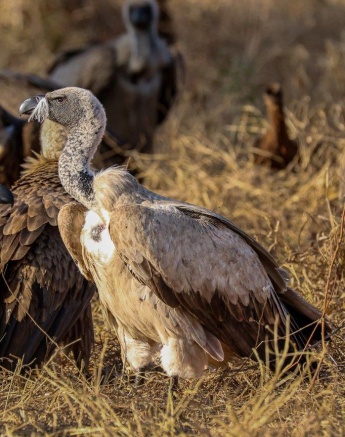
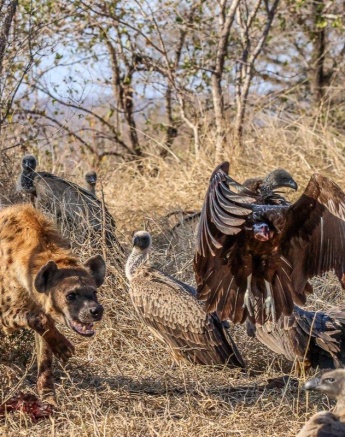
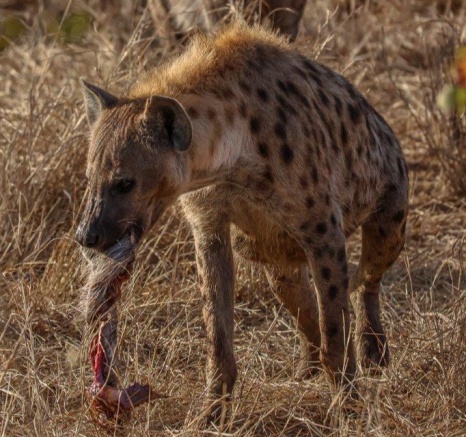
The Nyala, scientifically known as Tragelaphus angasii, is a large, spiral-horned antelope native to Southern Africa. It is considered one of the most visually striking and beautiful antelope species due to its shaggy, reddish-brown coat, distinct white markings, and impressive spiral horns on males. The Nyala's elegant appearance and graceful movements make it a sought-after sighting for wildlife enthusiasts and photographers in its natural habitat.
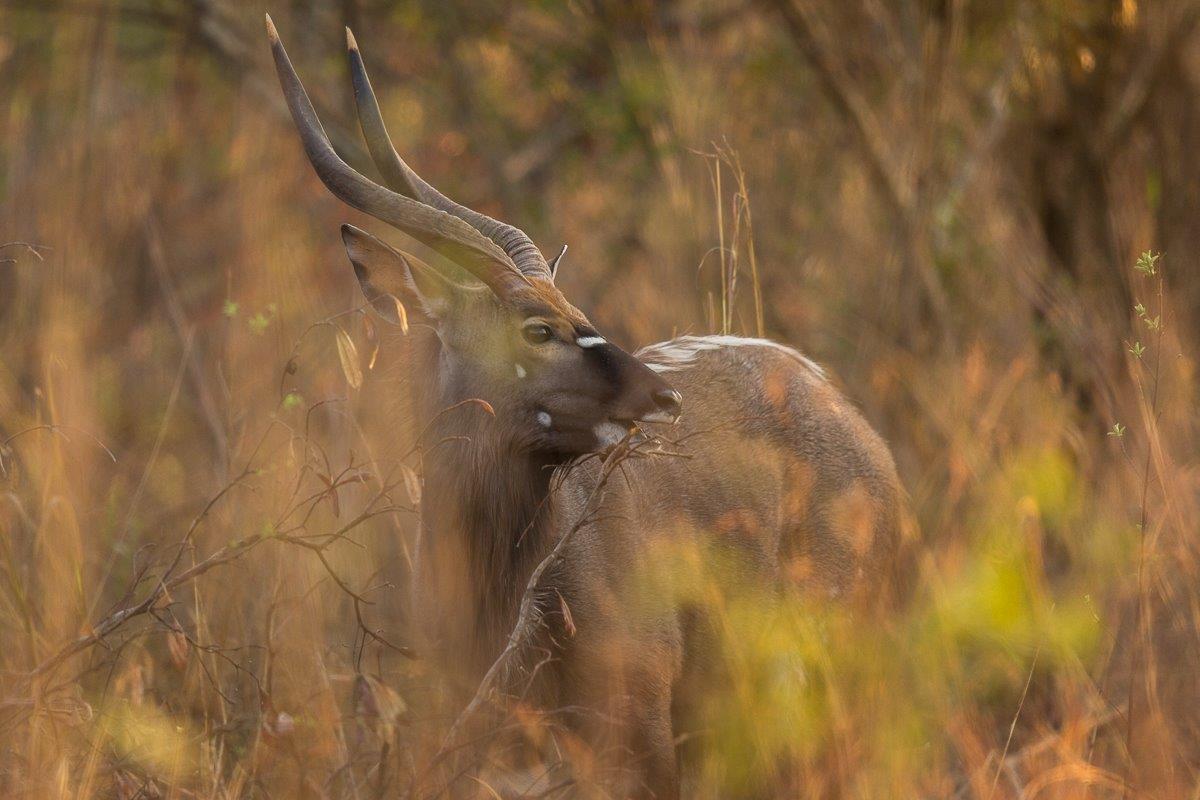
The African Spoonbill mainly spends its time in shallow aquatic habitats, favouring seasonal and permanent pans. These magnificent birds feed alone or sometimes seen in small groups. They wade through the water, bill submerged, sweeping left to right, snapping their prey like fish and small aquatic invertebrates in the spoon, swallowing with a backward head-jerk.

Giraffes often browse in thick vegetation because of the type of trees they love to feed on, mostly Tamboti trees and Acacias. Open space usually gives them some advantage in looking over predators who may surprise them. Their long necks in open vast lands help them to evade and see predators before they attack them.
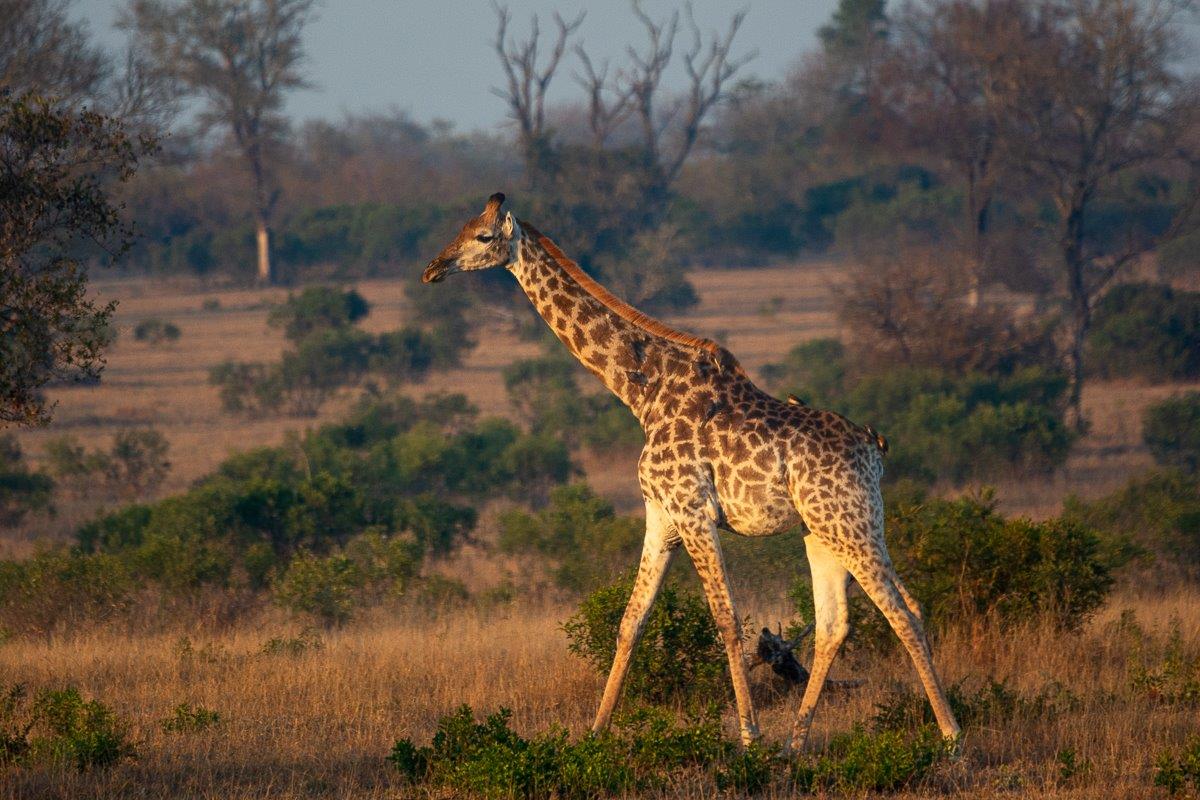
Elephants are water reliant. They will drink water every time it is available, especially in winter when water is scarce, so we frequent these waterholes on safari and often are rewarded with great sightings. Elephants not only look for water to drink but also cool themselves down from the harsh and dry conditions.
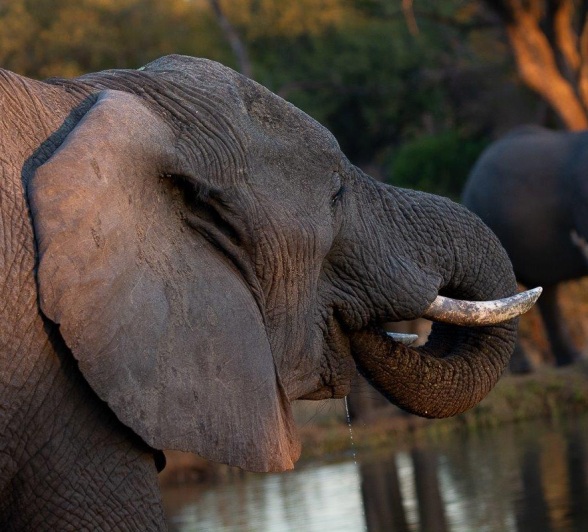

Two buffalo bulls had been fighting for a while and we watched as they head-butted each other. The sound of their horns clashing in the bush was enormous and we could hear them from a distance. One was clearly the weaker of the two as he had a lot of cuts on his neck and head.
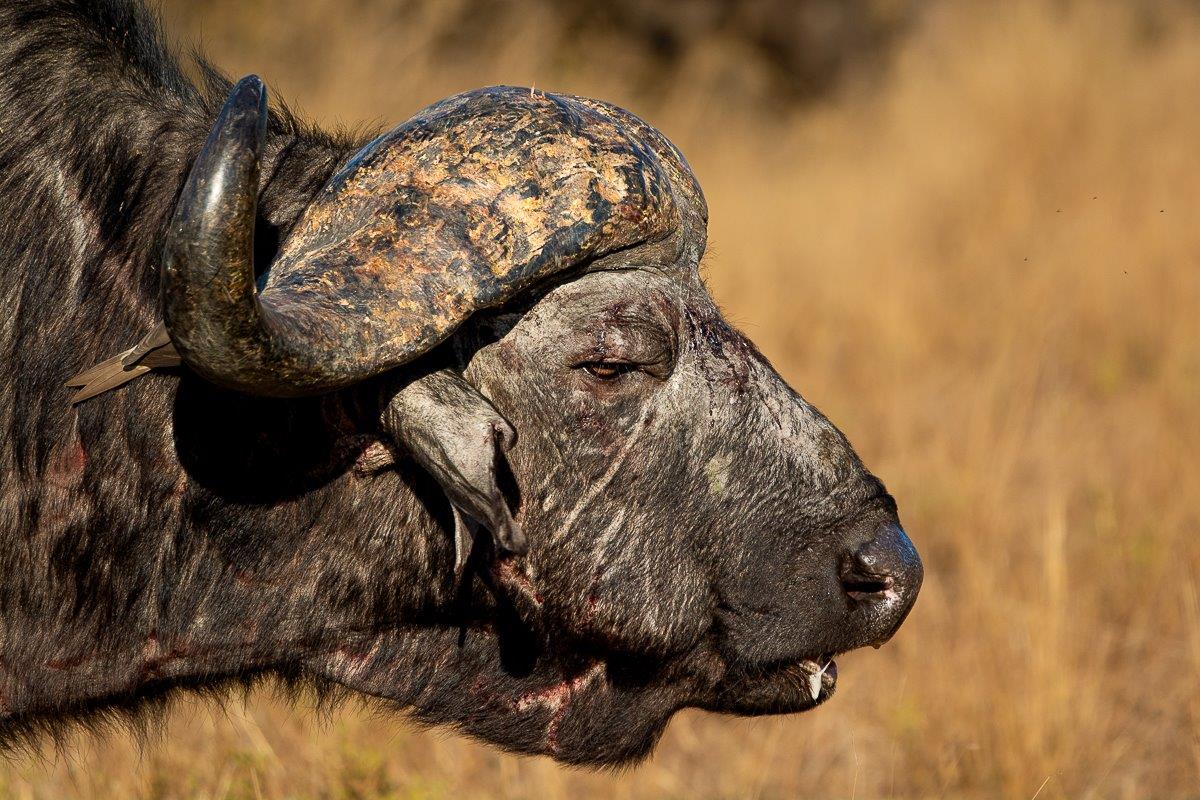
Coming across a waterhole filled with birdlife is quite impressive, especially over the winter months. Here we were spoiled by having a Grey heron and a Goliath Heron around the same water source looking for food. With the Goliath heron much bigger than the Grey Heron, standing up to 1.43 metres tall they have the upper hand when it comes to choosing where to feed. Both these birds feed on fish, frogs, small reptiles and worms, meaning they are in competition for food. Overfishing by humans has made it very difficult for these birds to survive as certain areas that are not protected could possibly mean no fish for them. These birds are more concentrated in protected areas as the aquatic life is still in full swing.
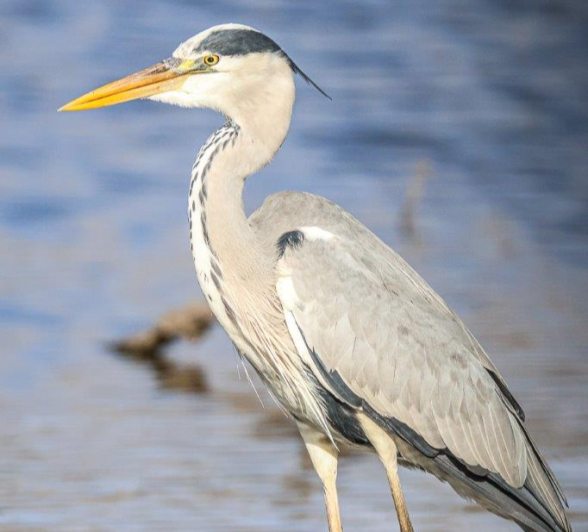
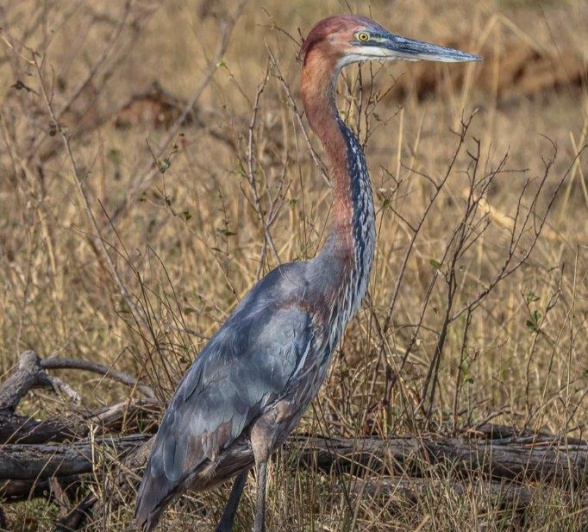
Until next time…
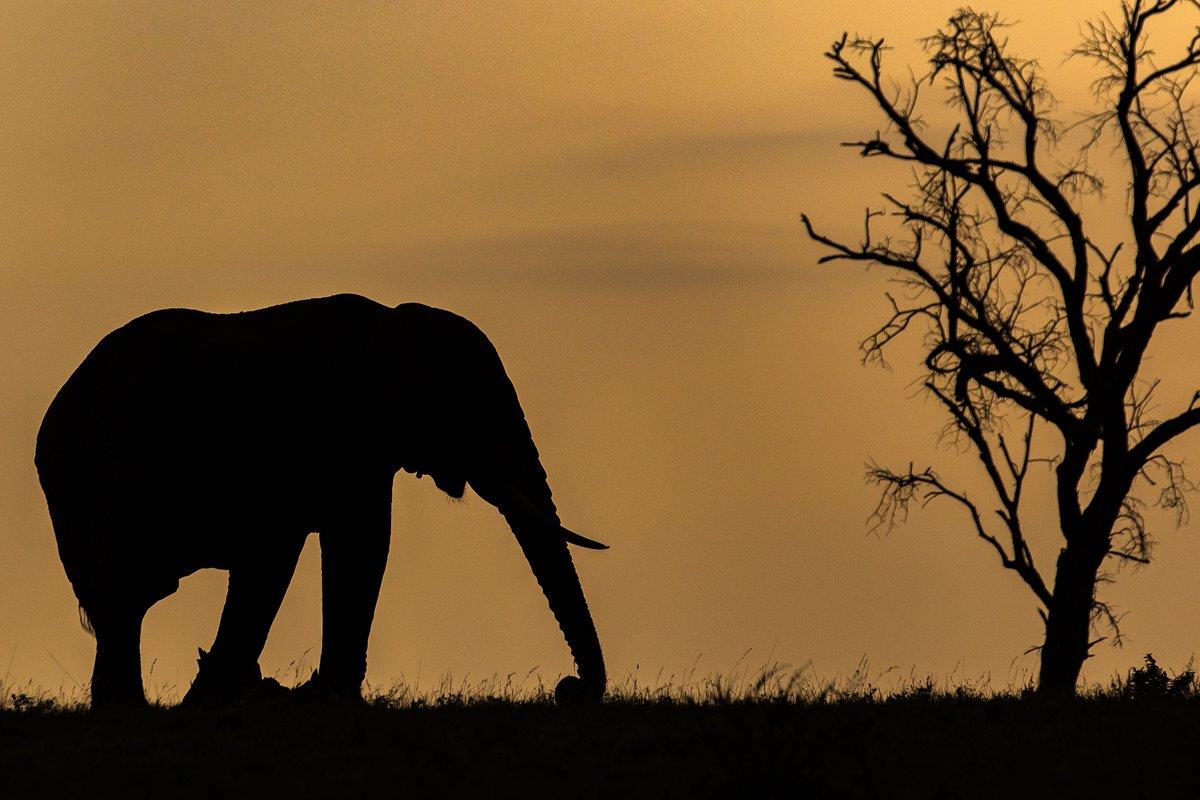
Blog by Wendy Claase
Images by Pravir Patel, Ronald Mutero and Ruan Mey







